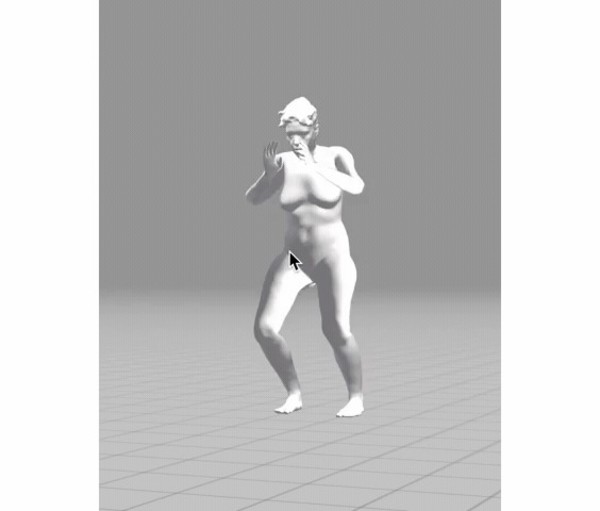Ronit Eden. curator & exhibition designer offers curatorship and exhibition design
© Ronit Eden. concept & spatial design
Design: Cubicle Design
Ruth Patir

Faking A Smile is Easier Than Explaining Why I'm Sad, 2019
Seeing Patir's work, my concerns that artificial intelligence and robots will soon replace us quickly dissipated. This digital rendering of a dancing woman allows us to focus on body gestures that might have otherwise escaped us if she was depicted in a classic photo. Above all, it has a sense of body exploration and its expression through movement. Such work enables us to trace body language and the various forms of dance, as a means to understand the history of people and places.
For me, this understanding manifested itself in three national pavilions at the latest Venice Biennale, where people's culture and history were revealed through dance and movement. Video works were projected on large screens and one could see the dancers' faces up close, watch the effort in their body movements, physically feel the ground shaking with the thump of their feet, almost smell their sweat.
At the Korean Pavilion, three female artists describe their ambivalence towards preserving traditional dance as opposed to modern dance, East and West influences, and the blurred gender division in dance groups. At the Brazilian pavilion, groups of dancers battle each other, occupying the space with their bold and erotic gestures. And somewhere in the city of Venice, at the Antigua and Barbuda pavilion, various traditional carnival accessories surround you upon entering a former church. All these items derive from rituals related to humans and their interaction with God and nature, and the space is filled with work documenting dancers in costumes and masks. In a passionate dance, the residents of the cities where the carnivals take place invite you to join the annual celebrations. In these three pavilions the dance and body movements tell a candid and exhilarating story, free from prejudice and the division between high and low art.
In her work-in-progress, Patir exposes us to a variety of movements. The woman in its centre will respond to the exhibition's visitor, thereby turning them both into partners in creating this work of art.
